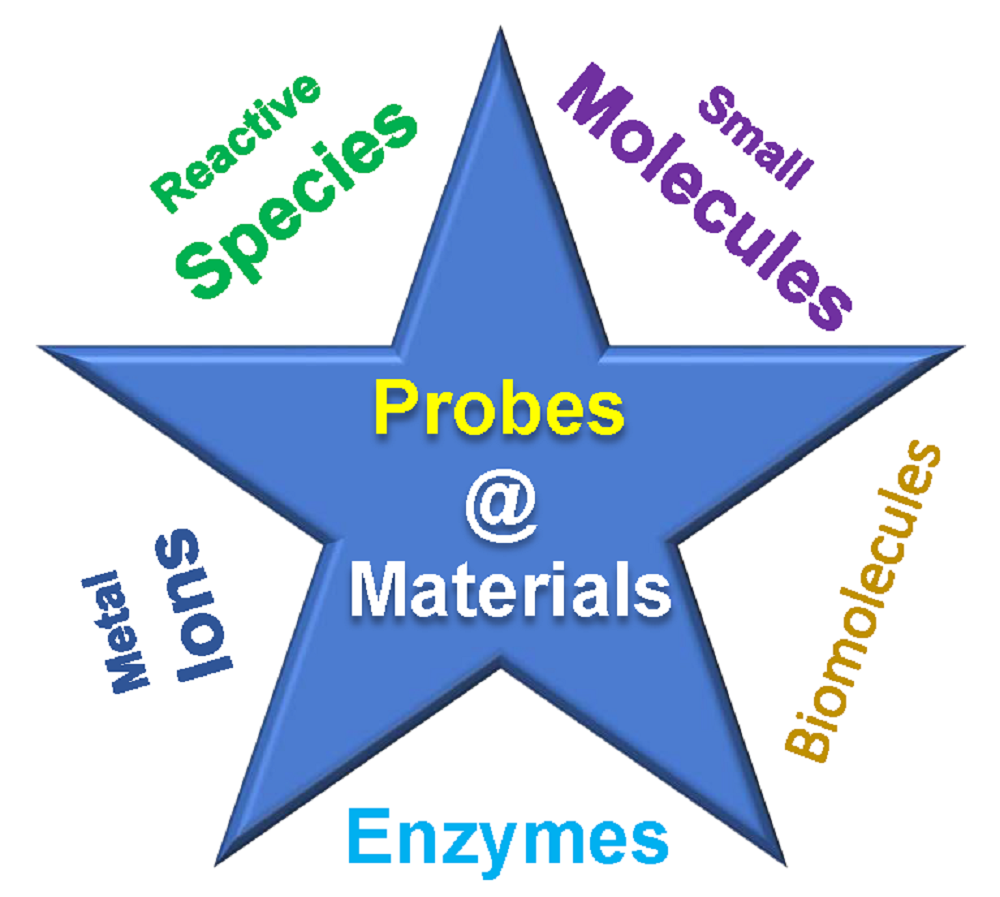To conclude, we would like to provide some guidance regarding appropriate research areas where development of fluorescent probes with enhanced capabilities for biomedical applications is required. These improved probe systems should: (1) Be capable of imaging
in vivo biomarkers and as such need to overcome the limited tissue penetration exhibited by visible fluorescence. One effective approach is to develop probes exhibiting long fluorescence emission wavelengths. Recent successful examples include the extension of emission wavelengths to the NIR-II region (1000–1700 nm), resulting in substantially enhanced imaging properties of organic dyes in terms of tissue penetration depth, spatial and temporal resolution, imaging contrast and biocompatibility [
61]. Alternatively, multimodal imaging can be used to multiplex the tissue penetration advantages of imaging modalities such as computed tomography and magnetic resonance imaging, with the imaging precision of fluorescence [
62]. (2) Be suitable for the quantitative analysis of trace amounts of endogenous metal ions, free radicals, anions, and enzymes in biological systems. As such, the judicious design of nanomaterial-based probes could be one solution to achieve this goal. For example, a dual-emission water-soluble
g-C
3N
4@AuNCs-based nanomaterial probe was designed by Guo et al. [
63] for the label-free, quantitative analysis of trace Fe
2+ and Cu
2+ in the presence of competing cations. (3) Be capable of multi-organelle-targeting and able to interrogate the spatial-temporal localization of biomarkers with sub-organelle precision [
64]. We have reported a fluorescent glycoprobe-human serum albumin (HSA) hybrid system with reversibly tunable fluorescent properties as a super-resolution imaging agent for intracellular
β-galactosidase (
β-Gal) activity. Using this probe, we found that while
β-Gal is evenly distributed in the cytoplasm of ovarian cancer cells, that the enzyme is specifically expressed in the lysosomes of senescent cells, thereby offering insight into the delineation of disease biology [
65]. (4) Should have undergone extensive assessment of their biocompatibility to ensure non-toxicity and mildness towards the tissues undergoing clinical evaluation [
66–
68]. As such, the host−guest inclusion of probe molecules with HSA, an endogenous protein abundantly existing in the human blood, could represent a facile approach to minimize the toxicity of highly conjugated dyes [
69].


















